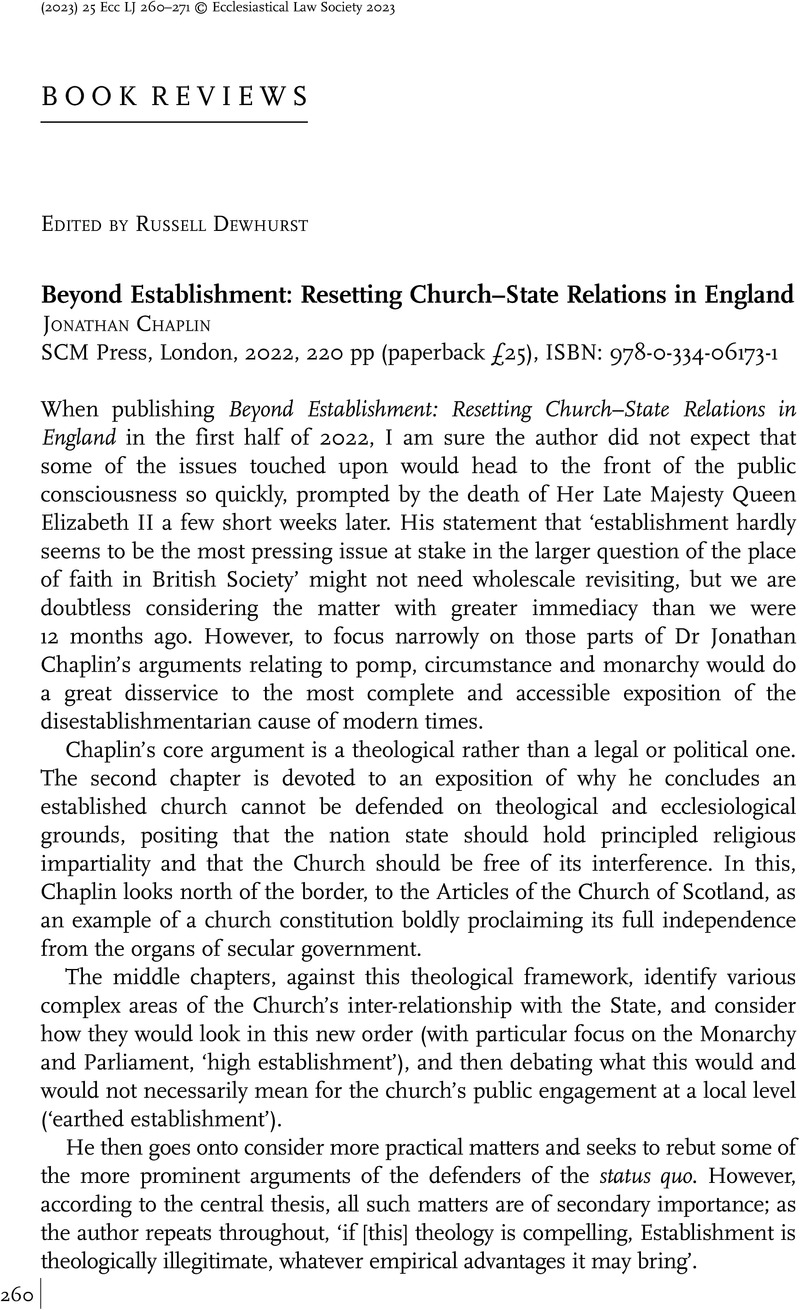No CrossRef data available.
Article contents
Beyond Establishment: Resetting Church–State Relations in England Jonathan Chaplin SCM Press, London, 2022, 220 pp (paperback £25), ISBN: 978-0-334-06173-1
Review products
Beyond Establishment: Resetting Church–State Relations in England Jonathan Chaplin SCM Press, London, 2022, 220 pp (paperback £25), ISBN: 978-0-334-06173-1
Published online by Cambridge University Press: 28 April 2023
Abstract
An abstract is not available for this content so a preview has been provided. Please use the Get access link above for information on how to access this content.

- Type
- Book Review
- Information
- Copyright
- Copyright © Ecclesiastical Law Society 2023



